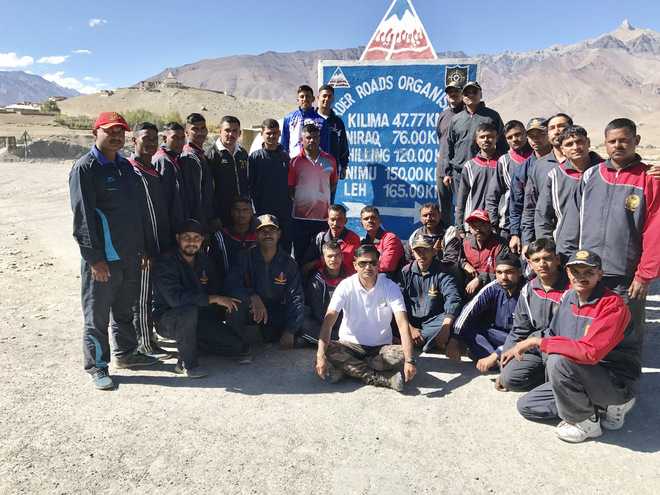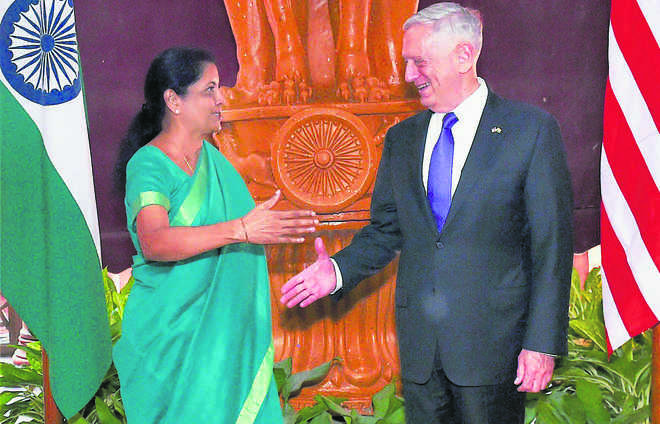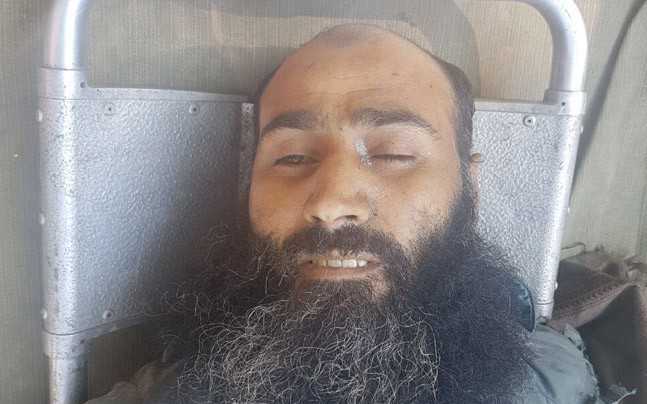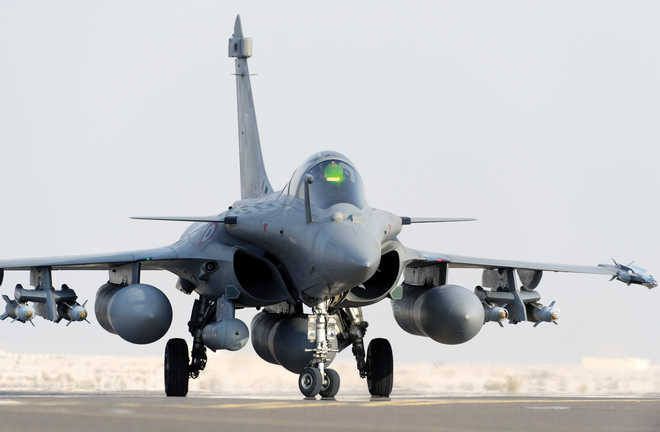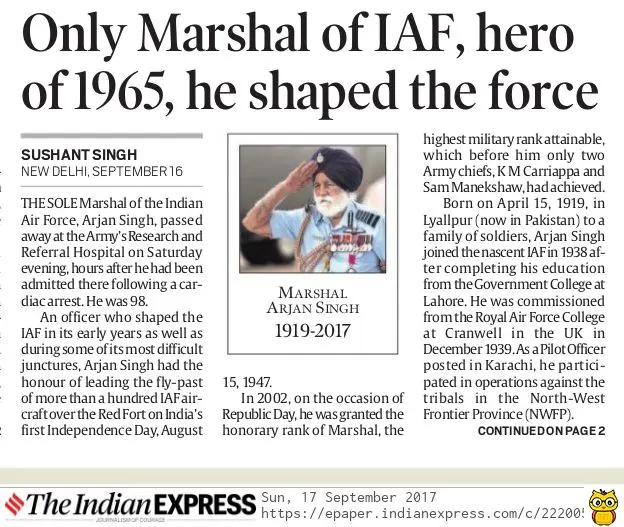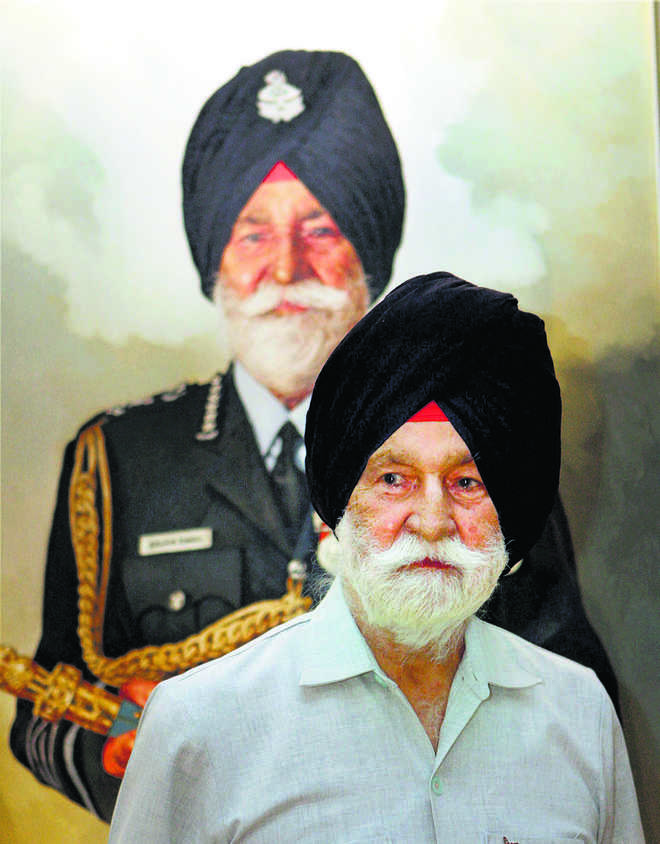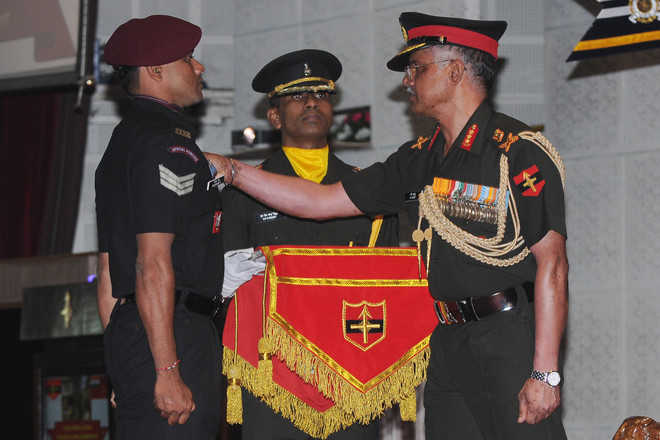Air Force Marshal Arjan Singh, an icon of India’s military history, will always be remembered as a war hero who had successfully led a young IAF during the 1965 Indo-Pak war.
The only officer to attain the highest post of Marshal, the Air Force equivalent to the Army’s five star field marshal, Singh was a fearless and exceptional pilot who had flown more than 60 different types of aircraft.
He played a major role in transforming the IAF into one of the most potent air forces globally and the fourth biggest in the world.
“His contribution to the Indian Air Force is monumental to the least. The IAF grew with him. He was epitome of military leadership in classical sense and it is, therefore, not surprising that he was honoured with the rank of Air Force Marshal,” former Vice Chief of IAF Kapil Kak said.
Known as a man of few words, Singh was not only a fearless pilot but had profound knowledge about air power and applied it in a wide spectrum of areas.
Singh had assiduously led the IAF during the 1965 war and denied success to Pakistani air force though it was better equipped with American support.
“His most outstanding contribution was during that war,” said Kak.
Commending his role in the war, Y B Chavan, the then Defence Minister had written: “Air Marshal Arjan Singh is a jewel of a person, quiet efficient and firm; unexcitable but a very able leader.”
In 1944, the Marshal had led a squadron against the Japanese during the Arakan Campaign, flying close air support missions during the crucial Imphal Campaign and later assisted the advance of the Allied Forces to Yangoon. In recognition of his feat, he was awarded the Distinguished Flying Cross (DFC) on the spot by the Supreme Allied Commander of South East Asia, the first Indian pilot to receive it.
Singh was selected for the Empire Pilot training course at Royal Air Force (RAF) Cranwell in 1938 when he was 19 years old. He retired from service in 1969.
Singh was born on April 15, 1919, in Lyalpur (now Faislabad, Pakistan), and completed his education at Montgomery (now Sahiwal, Pakistan).
His first assignment on being commissioned was to fly Westland Wapiti biplanes in the North-Western Frontier Province as a member of the No.1 RIAF Squadron. After a brief stint with the newly formed No. 2 RIAF Squadron where the Marshal flew against the tribal forces, he later moved back to No.1 Sqn as a Flying Officer to fly the Hawker Hurricane. He was promoted to the rank of Squadron Leader in 1944. For his role in successfully leading the squadron in combat, he was awarded the Distinguished Flying Cross (DFC) in 1944.
On August 15, 1947, he achieved the unique honour of leading a fly-past of over a hundred IAF aircraft over the Red Fort in Delhi.
After his promotion to the rank of Wing Commander, he attended the Royal Staff College at the UK. Immediately after Indian independence, he commanded Ambala in the rank of Group Captain.
In 1949, he was promoted to the rank of Air Commodore and took over as Air Officer Commanding (AOC) of an operational command, which later came to be known as Western Air Command. Singh had the distinction of having the longest tenure as AOC of an operational base, initially from 1949-1952 and then again from 1957-1961.
After his promotion to the rank of Air Vice Marshal, he was appointed as the AOC-in-C of an operational command. Towards the end of the 1962 war, he was appointed as the Deputy Chief of the Air Staff and he became the Vice Chief of the Air Staff in 1963.
On August 1, 1964, in the rank of Air Marshal, the Marshal of the Air Force Arjan Singh took over reins of IAF, at a time when it was still rebuilding itself and was gearing up to meet new challenges.
Singh was the first Air Chief to keep his flying currency till his CAS rank. Having flown over 60 different types of aircraft from pre-World War II era biplanes to the more contemporary, Gnats and Vampires, he has also flown in transport aircraft like the Super Constellation.
In 1965, when Pakistan launched its Operation Grand Slam, with an armoured thrust targeted at the vital town of Akhnoor, Singh led IAF through the war with courage, determination and professional skill. He inspired IAF to victory, despite the constraints imposed on the full-scale use of Air Force combat power.
Singh was awarded Padma Vibhushan for his astute leadership of the Air Force during the war.
Subsequently in recognition of the Air Force’s contribution during the war, the rank of the CAS was upgraded and Arjan Singh became the first Air Chief Marshal of the Indian Air Force.
He remained a flyer to the end of his tenure in IAF, visiting forward bases and units and flying with the squadrons.
He retired in August 1969, there upon accepting Ambassadorship to Switzerland. He was Lieutenant Governor of Delhi from December 1989 to December 1990.
Having been a source of inspiration to all personnel of Armed Forces through the years, government conferred the rank of the Marshal of the Air Force upon Arjan Singh in January 2002 making him the first and the only ‘Five Star’ rank officer with Indian Air Force.
With inputs from PTI.
